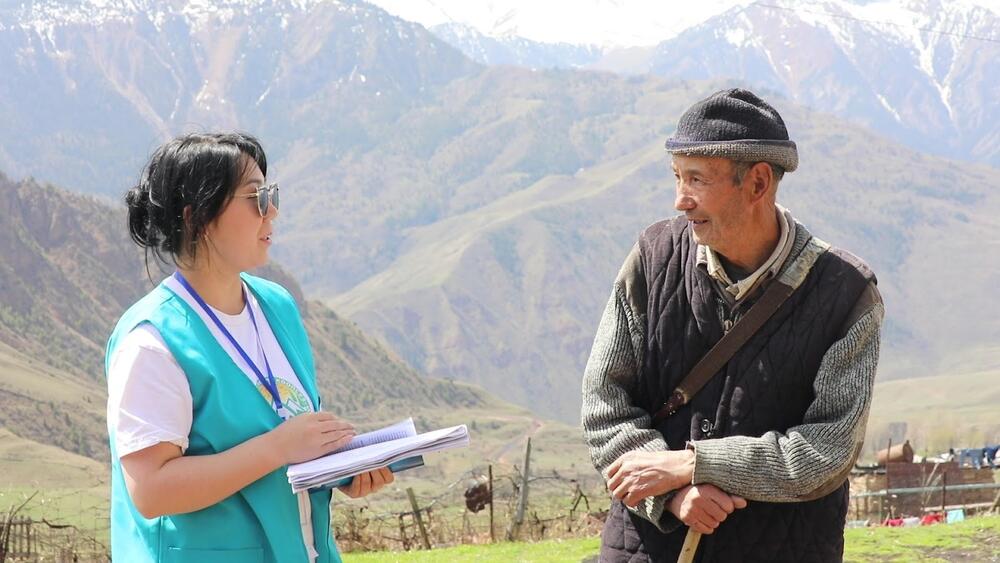News
Population census enters the digital age in Kyrgyzstan
- 20 May 2022
News
BISHKEK, Kyrgyzstan – For ten days in the spring, 24,000 enumerators spread out across this Central Asian country of 7 million to finally conduct the national population and housing census that had been postponed for two years because of COVID-19.
It was the third census the country has undertaken since declaring its independence in 1991 and the first conducted electronically.
“There was no need to carry paper and pens,” said Kanat Sydykov, a 20-year-old student at Kyrgyz State University and census taker in Kyrgyzstan. “It is a census literally conducted on the tips of the enumerators’ fingers.”
Enumerators, who each had to collect data from 400 people, did so using a mobile app developed by the World Bank.
“Previous censuses were paper-based,” explained Dinara Isakova, a specialist at the Bishkek Statistics Administration of the National Statistical Committee of the Kyrgyz Republic. “This process took more time, as each paper questionnaire needed to be encoded, digitized and only then the results could be retrieved.”

Pivotal population data
Data on the social and economic situation, education level of citizens, marriage and family structures and the ethnolinguistic composition of the population, to be published in 2023, was automatically transferred from the app to a database at the National Statistical Committee, which was assisted by UNFPA with methodological support, training, monitoring and with the development of the census questionnaire.
“Many sociodemographic issues are tackled with the help of the census data,” added Ms. Isakova. “One example is that we can identify where a new kindergarten or a new hospital needs to be built and allocate the governmental budget accordingly.”
People living in remote areas had to wait a little longer – until after snow blocking roads melted – to be surveyed. Because census data, which is collected every ten years or so, is vital to policymaking, development planning and social welfare programming, among other issues that contribute to functioning societies, every person must be counted. Absent such information, governments cannot address the needs of people they don’t know exist. Since the last census, the government has raised awareness with local authorities so that this time around, they actively supported census personnel facing any reluctance from the community.
“The results of the population and housing census are pivotal for evidenced-based decisions and policies," said Azamat Baialinov, head of the UNFPA country office in Kyrgyzstan. “It provides an instant portrait of society and can be used for the development of forecasts and programmes as well.”